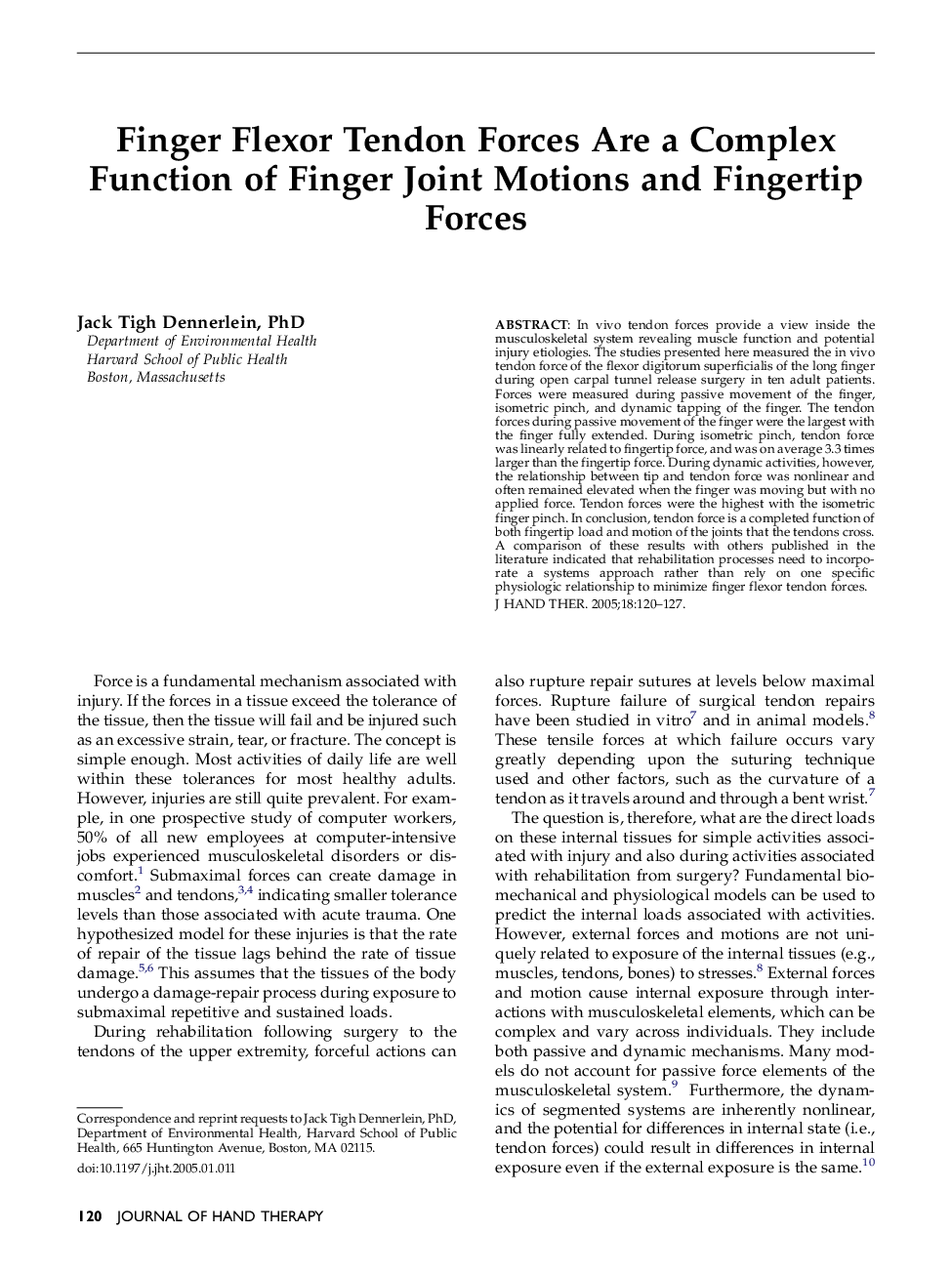| Article ID | Journal | Published Year | Pages | File Type |
|---|---|---|---|---|
| 9075127 | Journal of Hand Therapy | 2005 | 8 Pages |
Abstract
In vivo tendon forces provide a view inside the musculoskeletal system revealing muscle function and potential injury etiologies. The studies presented here measured the in vivo tendon force of the flexor digitorum superficialis of the long finger during open carpal tunnel release surgery in ten adult patients. Forces were measured during passive movement of the finger, isometric pinch, and dynamic tapping of the finger. The tendon forces during passive movement of the finger were the largest with the finger fully extended. During isometric pinch, tendon force was linearly related to fingertip force, and was on average 3.3 times larger than the fingertip force. During dynamic activities, however, the relationship between tip and tendon force was nonlinear and often remained elevated when the finger was moving but with no applied force. Tendon forces were the highest with the isometric finger pinch. In conclusion, tendon force is a completed function of both fingertip load and motion of the joints that the tendons cross. A comparison of these results with others published in the literature indicated that rehabilitation processes need to incorporate a systems approach rather than rely on one specific physiologic relationship to minimize finger flexor tendon forces.
Related Topics
Health Sciences
Medicine and Dentistry
Orthopedics, Sports Medicine and Rehabilitation
Authors
Jack Tigh PhD,
